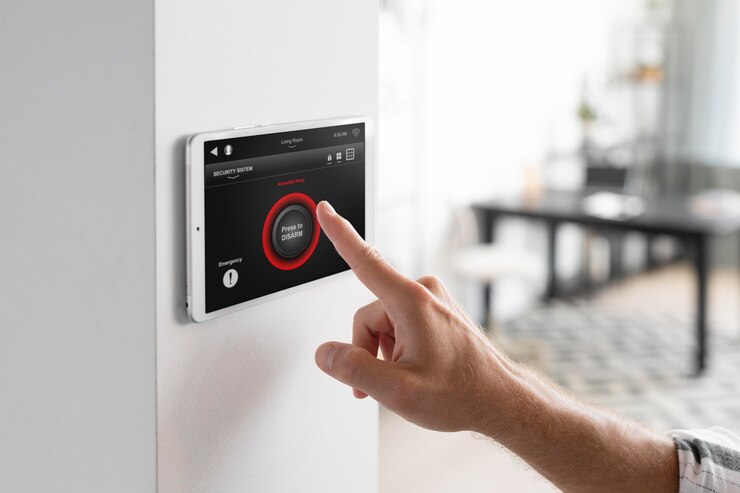How Do Home Security Systems Work?
June 8, 2024

Home security systems provide peace of mind by helping to protect your home and family from potential threats. But how exactly do they work? In this article, we’ll breakdown the core components and technology that make home security such an effective deterrent.
The Basic Components
All home security systems consist of the following basic elements:
Sensors
Sensors are installed around the perimeter of your home and function as the “eyes and ears” of the system. Common sensors include:
Motion Sensors – Detect movement inside the home.
Door/Window Sensors – Trigger if a door or window is opened.
Glass Break Sensors – Detect the high frequencies produced when glass breaks.
Control Panel
The control panel is the “brain” of the system. It connects to all the sensors and allows you to arm/disarm zones for maximum protection. Many feature touchscreens for ease of use.
Communication Technology
Should an alarm be triggered, the system needs to communicate with the monitoring company. This is usually handled by:
Cellular Communication – Systems connect via the cellular network.
Landline Communication – As a backup, systems can call the monitoring company over traditional phone lines.
Additional Devices
Beyond the basics, systems allow add-ons like security cameras, entry sensors, sirens, smoke/CO detectors and more for round-the-clock protection.
How it Works
Now that we understand the core components, let’s look at how a home security system functions on a step-by-step basis:
The Arming Process
- Arm the system via the control panel, mobile app, keypad or fob before leaving the home.
- All entry/exit sensors such as doors and windows go live and any motion inside will now trigger an alarm.
- The system enters the “exit delay” period, giving you time to leave without setting off the alarm.
When an Alarm is Triggered
- A sensor (e.g. a window is opened) gets tripped, immediately setting off a loud siren.
- The system dials the monitoring company over the cellular/landline connection.
- Operators see the alert and immediately reach out to homeowners and emergency services if needed.
- The siren continues until the homeowners disarm the system or emergency services arrive.
- False alarms can be avoided by properly identifying pets or temporary entries while armed.
Popular Home Security Systems
There are many reputable providers to choose from including DIY, professional monitoring and hybrid systems. Here are a few top options:
Vivint
As a professional installation, Vivint offers cutting-edge Smart Home tech like cameras, sensors, doorbells and automation. Feedback suggests quality equipment and service.
ADT
The pioneer of home security, ADT utilizes reliable cellular monitoring. Their DIY Blue by ADT system allows self-monitoring at a more affordable price.
SimpliSafe
An easy DIY system with options scalable to your needs. Minimal equipment for basic protection or add cameras, entry sensors and more. Affordable professional monitoring available too.
Ring Alarm
The DIY system from Amazon’s Ring is budget-friendly with optional self-monitoring or affordable professional monitoring. Integrates with Ring’s video doorbells and cameras.
Frontpoint
Recommended for its affordable professional monitoring and cellular backup communication. Equipment quality is on par with more costly brands according to reviews.
In conclusion, home security systems provide peace of mind through perimeter protection, monitored alarms and in some cases video surveillance too. Do your research to find a reputable provider and system that best suits your budget and lifestyle. Staying safe at home is always worth the investment.